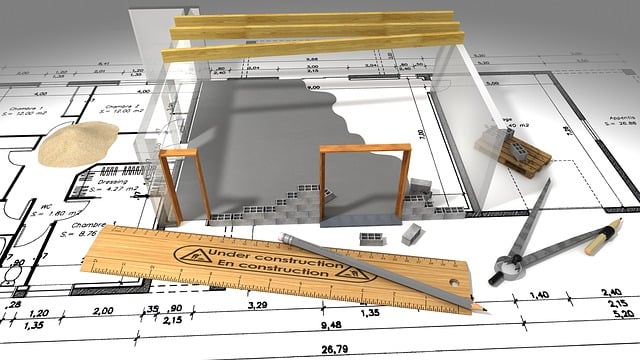In the construction industry, inspections play a critical role in ensuring quality, safety, and compliance with regulations. However, the traditional inspection process can be time-consuming, inefficient, and prone to errors.
To address these challenges, a construction tech company has developed a blueprint that aims to streamline inspections, expedite issue resolution, and improve operational efficiency. By implementing standardized protocols, leveraging digital tools, enhancing communication and collaboration, analyzing data in real-time, and focusing on continuous improvement, this blueprint has the potential to revolutionize the inspection process.
Standardization of inspection protocols:
One of the blueprint’s important components is the standardisation of inspection techniques. Construction businesses may ensure uniformity and efficiency throughout all inspections by creating clear and standardised standards.
This includes developing inspection criteria, checklists, and processes adapted to individual project needs. To guarantee effective implementation, all inspectors get extensive training that equips them with the essential knowledge and abilities to follow the standardised standards.
It is critical to standardise inspection processes in order to achieve uniformity and efficiency in the inspection process. Construction businesses may assure uniform inspections by developing inspection criteria, checklists, and processes that fit with specific project needs.
Inspectors get extensive training to ensure they have the information and abilities needed to follow the standardised guidelines. This not only increases inspection quality and accuracy, but it also supports a consistent approach across projects, resulting in speedier issue resolution and increased operational efficiency.
Embracing digital tools:
Another critical component of the plan is the use of digital technologies. By enabling fast data gathering, processing, and reporting, construction technology solutions may considerably improve the inspection process.
Inspections can be streamlined and paperless by using mobile applications or digital platforms. Data input and analysis may be simplified with the use of automation technology, decreasing manual work and errors.
Construction organizations may save time, enhance accuracy, and get real-time access to inspection data by digitizing the inspection process.
Digital technologies play an important part in the plan, significantly improving the inspection process. Construction technology solutions expedite inspections by providing rapid data collection, processing, and reporting. Mobile applications and digital platforms minimise the need for paperwork, while automation technology streamlines data input and analysis, decreasing human effort and mistake risk. By digitizing the process, construction businesses may save time, improve accuracy, and access inspection data in real-time, resulting in increased operational efficiency.
Effective communication:
Any inspection process requires effective communication and teamwork to be successful. The plan emphasizes the creation of lines of communication between inspectors, project teams, and stakeholders.
It is possible to cultivate a culture of continuous improvement through encouraging teamwork and information exchange. A centralized system for handling inspection-related communications can be created to guarantee seamless information flow. This reduces misunderstanding, delays, and confusion, resulting in speedier issue resolution and increased productivity.
Effective communication and teamwork are critical for the success of any inspection process, and the plan acknowledges this. The strategy emphasizes the need of developing lines of communication among inspectors, project teams, and stakeholders. Construction businesses may encourage innovation and efficiency in inspections by developing a culture of continuous improvement via cooperation and information exchange.
Using a centralized system to manage inspection-related communications ensures that information flows smoothly, reducing misunderstandings, delays, and confusion. As a result, all parties concerned may effectively collaborate to resolve inspection-related concerns, resulting in faster issue resolution and higher productivity.
Real-time analysis:
Another effective tool is real-time data analysis. Construction organizations may acquire significant insights into trends, patterns, and recurring concerns in inspection data by utilizing data analytics.
Implementing real-time inspection data monitoring and analysis enables proactive decision-making. This implies that any problems may be recognised and handled as soon as possible, reducing the impact on project deadlines and budgets. Construction organizations may prioritise their resources and focus on areas that demand immediate attention by employing data analysis, resulting in speedier issue resolution.
Regular reviews and training:
Construction organisations are encouraged to assess and improve their inspection methods on a regular basis based on feedback, industry best practises, and data analysis.
Inspectors are encouraged to give ideas for process improvements based on their knowledge and experience because they are on the front lines of the inspection process.
Periodic training sessions and seminars are held to keep inspectors up to date on the newest improvements. This guarantees that inspectors have the information and skills needed to conduct inspections properly and efficiently.
Conclusion:
In conclusion, the blueprint presented by the construction tech company offers a comprehensive approach to streamline inspections, expedite issue resolution, and improve operational efficiency.
By implementing standardized protocols, leveraging digital tools, enhancing communication and collaboration, analyzing data in real-time, and fostering a culture of continuous improvement, construction companies can transform their inspection process.
The benefits of this transformation include faster issue resolution, improved quality and safety, enhanced customer satisfaction, and increased productivity. By embracing these innovative practices, the construction industry can thrive with efficient inspections and ultimately achieve better project outcomes.




